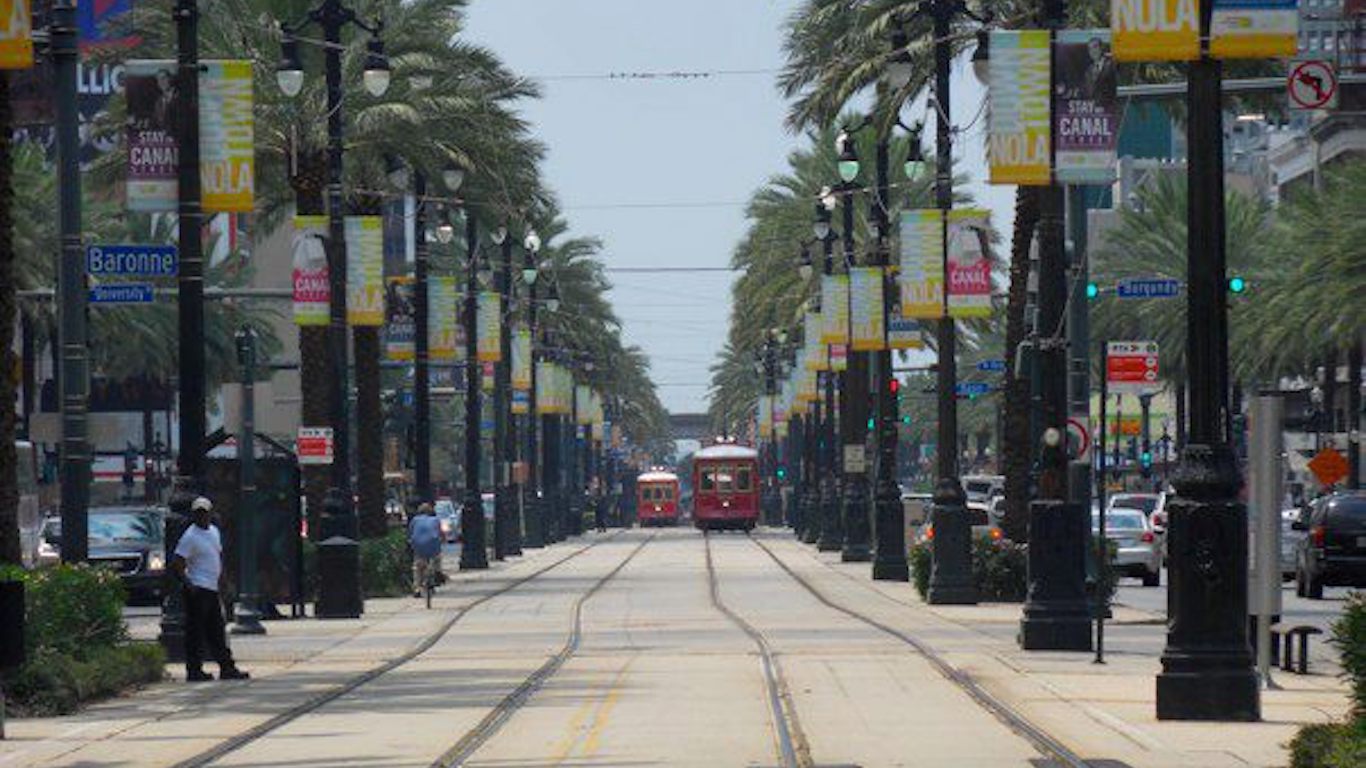

As Tropical Storm Barry moves toward New Orleans and still may become a hurricane, it will strike a city much smaller than it was just 60 years ago. Hurricane Katrina in 2005 contributed to some of the population fall-off, but it started well before that storm and dropped for several reasons not related to storms.
In 1960, New Orleans had 628,000 people, according to the U.S. Census. After dropping to 344,000 in 2010, it has recovered to 391,000. That is down 237,000 over the longer period.
Among the reasons for the sharp decline was the migration of people who lived in the area to the suburbs. The Organization of American Historians (OAH) said of the population history of New Orleans, “When the civil rights movement integrated public elementary and secondary schools, the flight of the white middle class to the suburbs accelerated both residential and educational segregation and set in motion the social forces that contributed to the city’s population loss after 1960.” Also, the larger metro area, which contains the city and surrounding areas, continued to grow in the 1970s, an indication that the population had not fled the area altogether.
New Orleans is also a major port. Another reason given for the population decline is that many of the jobs in the port facilities were replaced by automation and the move to containers to transport cargo on large ships, which made them easier to load and unload. Yet another reason is that New Orleans did not become a technical center as many west coast, Texas and east coast cities did. The growth of the tech industry nationwide lifted the populations of cities with a high percentage of this kind of worker, as the OAH analysis supports.
Some of the problems are also likely due to race relations. Some of the largest factors contributing to segregation in New Orleans today are the city’s long history of racial zoning ordinances, pre-Katrina housing conditions that left black families more vulnerable to flooding, and post-Katrina housing policies tied to pre-hurricane housing values that favored wealthy, white neighborhoods. But New Orleans is not the only city with similar problems — these are the 16 most segregated cities in America.
Finally, New Orleans suffered the effects of flooding well before Katrina. Low-lying parts of the city were never properly protected by infrastructure from major storms, almost all of which came from the Gulf of Mexico. An example of this is Hurricane Betsy, which struck the city in 1965, causing widespread flooding and a number of deaths. There are “before and after” photos that illustrate the flooding caused by Katrina and what happened in several other major cities hit by the weather disasters — and here are before and after images of some of the world’s most disastrous weather events.
Sponsored: Attention Savvy Investors: Speak to 3 Financial Experts – FREE
Ever wanted an extra set of eyes on an investment you’re considering? Now you can speak with up to 3 financial experts in your area for FREE. By simply
clicking here you can begin to match with financial professionals who can help guide you through the financial decisions you’re making. And the best part? The first conversation with them is free.
Click here to match with up to 3 financial pros who would be excited to help you make financial decisions.
Thank you for reading! Have some feedback for us?
Contact the 24/7 Wall St. editorial team.



